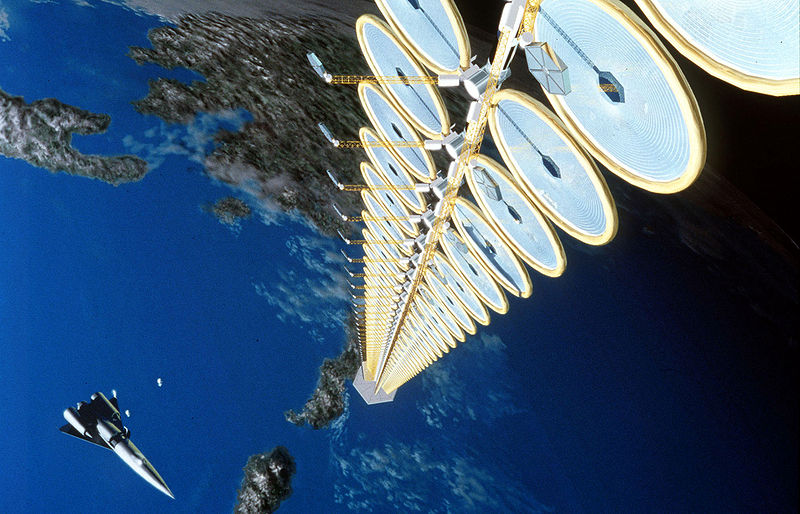Space, solar power's next frontier?


Some of the world’s foremost astronautics scientists believe that the future of solar power lies in space, but it would require a long-term commitment and international cooperation.
The International Academy of Astronautics (IAA) has spent the past several years studying the feasibility of collecting solar energy in space and “beaming” it to Earth for collection. It completed its report in August, and SpaceWorks Enterprises sponsored its distribution.
IAA has been dedicated to advocating space technology and exploration for non-military purposes since 1960. Dr. Peter Glaser of Arthur D. Little invented the solar powered satellite that same decade. NASA began to examine proposals for space based solar power in the late 1990's.
The primary benefit of placing a solar farm in orbit is that it would constantly harness the sun’s rays directly while not producing any terrestrial carbon pollution. It could also generate enough power to meet that world’s energy demands, the report says.
Private companies have also latched onto the idea of space based solar power. Solaren Corp. struck a deal with Pacific Gas & Electric to begin supplying PG&E with celestial solar energy in 2016.
Under IAA's proposal, satellites would be positioned in geosynchronous orbit over the equator and span several miles. Power would be converted into microwaves or laser beams, which would then be directed down to Earth. Here's how the report suggested that might work:
Challenges include the damaging potential of space junk, as well as high development costs and requirement for new technologies to place satellites into orbit, according to Reuters, which received a copy of the study ahead of its release.
The good news is that such technologies exist, and are being incubated in laboratories, the study determined. However, migrating those ideas from the lab into production would require substantial government seed money and a vast international development program.
This R&D would lead to flight experiments and demonstrations in space to resolve the remaining economic and technical issues, the report concluded.
IAA suggested that solar power in space could only be accomplished by coordinating the efforts of national space agencies and private groups such as companies, non-governmental organizations, and universities.
The IAA also concluded that while the idea of space power may be viable, it needs much more information to make any recommendations. That includes market studies and systems analysis "in the context of 21st century markets."
I’m skeptical that a project of this magnitude could be accomplished. World leaders can’t even agree to take action on climate change, but I will not dismiss the potential of mankind to accomplish what seems impossible – provided the stakes are high enough.
Related on SmartPlanet:
- Star Trek tech to beam extraterrestrial particles for NASA
- How the defunct NASA Space Shuttle program is improving solar power
This post was originally published on Smartplanet.com
